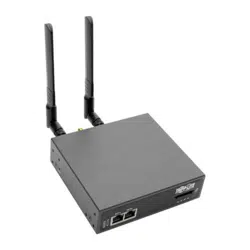Loading ...
Loading ...
Loading ...

242
15. Advanced Configuration
# pmusers --disconnect -u robertw -u pchunt -n 4 -n 6
Disconnect users robertw, pchunt from ports 4, 6? (y/n)
y
10 sessions were disconnected
# pmusers --disconnect -u tester --no-prompt
No sessions were disconnected
portmanager daemon
There is normally no need to stop and restart the daemon. To restart the daemon normally, simply run the command:
# portmanager
Supported command line options are:
Force portmanager to run in the foreground: --nodaemon
Set the level of debug logging: --loglevel={debug,info,warn,error,alert}
Change which configuration file it uses: -c /etc/config/portmanager.conf
Signals
Sending a SIGHUP signal to the portmanager will cause it to reread its configuration file.
15.2.2 External Scripts and Alerts
The portmanager has the ability to execute external scripts on certain events.
When a port is opened by the portmanager:
• It attempts to execute /etc/config/scripts/portXX.init (where XX is the number of the port, e.g. 08). The script is run with
STDIN and STDOUT, both connected to the serial port.
• If the script cannot be executed, portmanager will execute /etc/config/scripts/portXX.chat via the chat command on the
serial port.
When an alert occurs on a port:
• When an alert occurs on a port, the portmanager will attempt to execute /etc/config/scripts/portXX.alert (where XX is the
port number, e.g. 08).
• The script is run with STDIN containing the data that triggered the alert, and STDOUT redirected to /dev/null, NOT to the
serial port. If you wish to communicate with the port, use pmshell or pmchat from within the script.
• If the script cannot be executed, the alert will be mailed to the address configured in the system administration section.
When a user connects to any port:
• If a file called /etc/config/pmshell-start.sh exists, it will run when a user connects to a port. It provides two arguments: the
“Port number” and the “Username”. For example:
</etc/config/pmshell-start.sh >
#!/bin/sh
PORT=”$1”
USER=”$2”
echo “Welcome to port $PORT $USER”
< /etc/config/pmshell-start.sh>
• The return value from the script controls whether the user is accepted or not, if 0 is returned (or nothing is done on exit as in
the above script) the user is permitted, otherwise the user is denied access.
Loading ...
Loading ...
Loading ...
